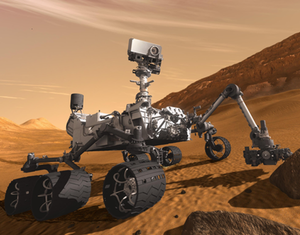Thermodynamics Confronts Quantum Mechanics
Thermoelectric devices, which convert heat into electricity, can potentially recapture useful energy from heat sources such as the hot exhaust gases of vehicles. But a theoretical study in Physical Review Letters shows that, if such devices are to remain relatively efficient while producing substantial power, they can’t be any smaller than a minimum of perhaps a few millimeters across. This size limit is determined by the laws of quantum physics that govern the behavior of electrons, even though such quantum effects are usually associated with much smaller size scales.
The laws of thermodynamics were developed in the mid- 19th century to describe the efficiency with which heat can be converted into useful work and were applied to the engines and machines of the time. Today, the emerging field of quantum thermodynamics addresses the degree to which thermodynamic principles may be modified at the small scales now being reached by nanomachines.
Robert Whitney of the University of Grenoble, France, and the French National Center for Scientific Research (CNRS) has now shown that such quantum effects can have surprisingly macroscopic implications. He studied the effects of the quantum nature of electrons on the operation of thermoelectric devices, which produce an electric current when electrons diffuse from a hot region to a cold region of a material. The question is: how narrow can the conducting channel be before the wave nature of the electrons starts to affect their ability to flow through it? In 1983, John Pendry of Imperial College London showed that there is a limit to the amount of heat that electrons can carry through an aperture [1]. “The electron current through the generator is a bit like traffic flow on a main road,” says Whitney. At a particular channel width, the flow gets congested. This minimum width depends on the effective “size” of the electrons, which is set by their quantum wavelength.
Whitney carried out the quantum-mechanical calculations to find out when, for typical operating parameters of a thermoelectric device, this sort of electron congestion would reduce the efficiency. He found that, for any given output power, heat was transmitted most efficiently when the electrons have a well-defined maximum and minimum energy. Vehicle traffic is similar in that it flows most efficiently when there is a well defined range of speeds, rather than including vehicles at all possible speeds.
Next, Whitney derived the amount of heat that can be carried by this optimal transmission profile across a channel of a particular size, and he was surprised by the results. A 100-watt generator running at high efficiency must have a cross sectional area of at least 0.5 square centimeters—“about the area of a button on your shirt,” he says. “This is huge compared to objects that can consume that power; for example, the filament of a 100-watt light bulb has the cross sectional area of a hair on your head.“
This minimum size appears to come from the fact that each electron transmission “channel” has a minimum width set by the electron’s quantum wavelength, and it can’t overlap with other channels. For maximum efficiency, each channel must carry as little energy as possible, so to get 100 watts, you need a lot of these channels in parallel. But Whitney admits that he doesn’t yet have a complete intuitive picture explaining why quantum theory gives such a large minimum size.
Whitney says 100 watts is typical for thermoelectrics, such as those used by NASA’s Mars rover Curiosity. But if you can make do with less power, then the size constraints are reduced accordingly. For a 1-watt power generator (the typical power consumption of a smartphone during a phone call), the cross section can be 100 times smaller. “So if we want to miniaturize our power generators, we must reduce the power we require,” Whitney says.
David Sanchez of the University of the Balearic Islands in Palma de Mallorca, Spain, says that findings like these show that quantum physics is providing new insights into thermodynamics, an old discipline that many people believed to be exhausted. As Whitney’s results demonstrate, “these fundamental findings turn out to have serious implications for practical devices,” Sanchez says. He adds that Whitney’s work also suggests a new way to investigate the crossover between the quantum and macroscopic worlds. The new theory provides the tools for experimentalists to compare the power generated by a fully quantum device with that of its classical counterpart.
–Philip Ball
Philip Ball is a freelance science writer in London. His latest book is How Life Works (Picador, 2024).
References
- J. B. Pendry, “Quantum Limits to the Flow of Information and Entropy,” J. Phys. A 16, 2161 (1983)





